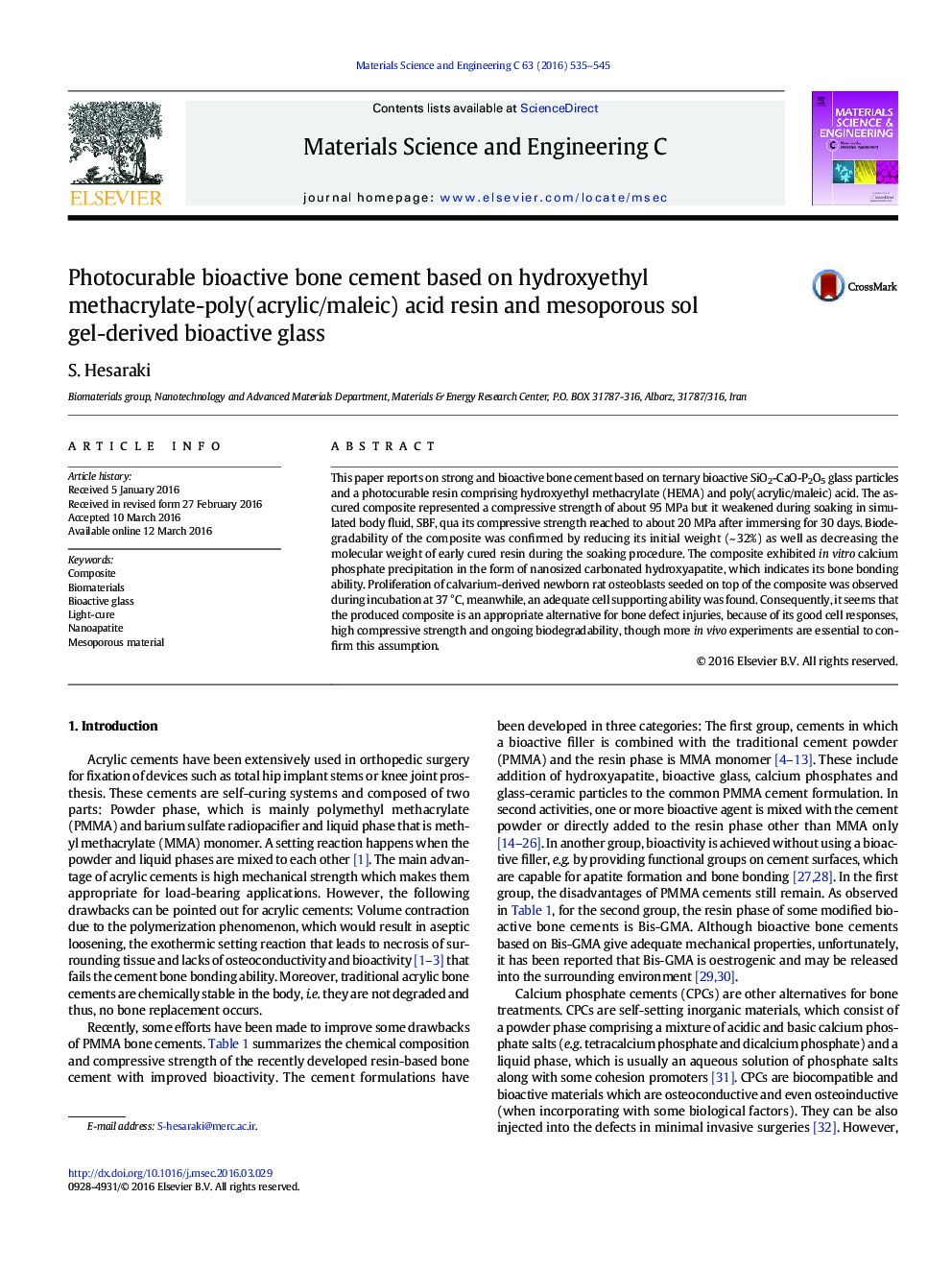| Article ID | Journal | Published Year | Pages | File Type |
|---|---|---|---|---|
| 1428046 | Materials Science and Engineering: C | 2016 | 11 Pages |
•Light cure cement based on SiO2-CaO-P2O5 glass and polymer-like matrix was formed.•The matrix includes poly(acrylic/maleic acid) and poly(hydroxyethyl methacrylate).•The cement is as strong as polymethylmethacrylate bone cement.•The cement exhibits apatite formation ability in simulated body fluid.•The cement is biodegradable and supports proliferation of osteoblastic cells.
This paper reports on strong and bioactive bone cement based on ternary bioactive SiO2-CaO-P2O5 glass particles and a photocurable resin comprising hydroxyethyl methacrylate (HEMA) and poly(acrylic/maleic) acid. The as-cured composite represented a compressive strength of about 95 MPa but it weakened during soaking in simulated body fluid, SBF, qua its compressive strength reached to about 20 MPa after immersing for 30 days. Biodegradability of the composite was confirmed by reducing its initial weight (~ 32%) as well as decreasing the molecular weight of early cured resin during the soaking procedure. The composite exhibited in vitro calcium phosphate precipitation in the form of nanosized carbonated hydroxyapatite, which indicates its bone bonding ability. Proliferation of calvarium-derived newborn rat osteoblasts seeded on top of the composite was observed during incubation at 37 °C, meanwhile, an adequate cell supporting ability was found. Consequently, it seems that the produced composite is an appropriate alternative for bone defect injuries, because of its good cell responses, high compressive strength and ongoing biodegradability, though more in vivo experiments are essential to confirm this assumption.
